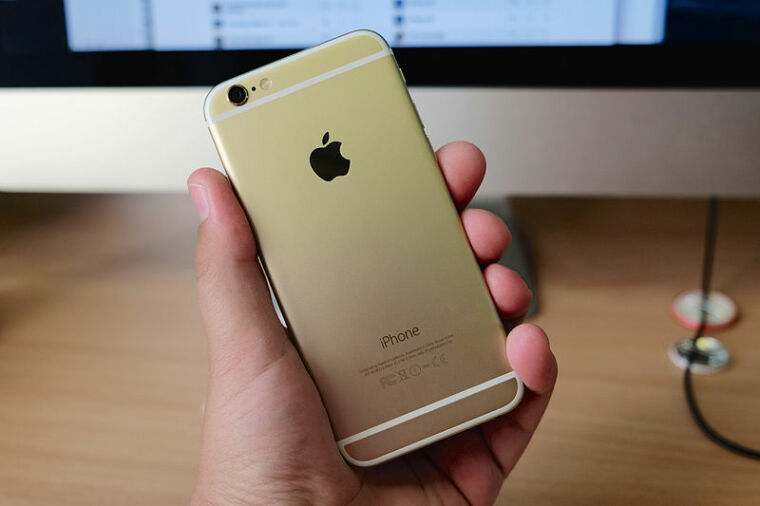iPhone 7 release date, specs news: Flagship to arrive with dual-SIM support?

The Apple iPhone 7 has continued to be a favorite subject of rumors and speculations all over the internet. According to reports, several sources coming from manufacturing companies in China allegedly revealed new features of the highly anticipated flagship smartphone. The upcoming handset is said to have a dual-SIM support. There are also speculations suggesting that it may carry a 256-gigabyte internal storage capacity, which will double what the current iPhone model has.
Aside from the rumored features, there are also reports saying that mass production of the device has already started, which could lead to a possible earlier release than expected.
According to a report by Engadget, Apple will add new features that have never been seen on the previous iPhone releases. However, these add-ons have long been enjoyed by Android users, including the dual-SIM support.
If rumors prove to be true, the new iteration will certainly give a whole new experience to iPhone fans. Nonetheless, the dual-SIM feature has yet to gain popularity among North American users, so it will most likely to be released in selected countries such as China and other Asian countries.
It was previously reported that Apple will focus on making major changes in the device's storage capacity. Engadget reported that the new iPhone 7 and 7 Plus will definitely arrive in the market with 256 GB maximum internal storage. The report added that Apple will no longer roll out the 16 GB basic storage as the base unit of the next generation iPhone will already house 32 GB storage.
Meanwhile, the device will also run on the newest Apple operating system, iOS 10 which should add a few more features to the much-anticipated device.
As of now, Apple has yet to provide specific details with regard to its release; however, rumors point to a September rollout along with other Apple devices.
 Christians don't have to affirm transgenderism, but they can’t express that view at work: tribunal
Christians don't have to affirm transgenderism, but they can’t express that view at work: tribunal Archaeology discovery: Medieval Christian prayer beads found on Holy Island
Archaeology discovery: Medieval Christian prayer beads found on Holy Island Presbyterian Church in America votes to leave National Association of Evangelicals
Presbyterian Church in America votes to leave National Association of Evangelicals Over 50 killed in 'vile and satanic' attack at Nigerian church on Pentecost Sunday
Over 50 killed in 'vile and satanic' attack at Nigerian church on Pentecost Sunday Ukrainian Orthodox Church severs ties with Moscow over Patriarch Kirill's support for Putin's war
Ukrainian Orthodox Church severs ties with Moscow over Patriarch Kirill's support for Putin's war Islamic State kills 20 Nigerian Christians as revenge for US airstrike
Islamic State kills 20 Nigerian Christians as revenge for US airstrike Man who served 33 years in prison for murder leads inmates to Christ
Man who served 33 years in prison for murder leads inmates to Christ


 Nigerian student beaten to death, body burned over ‘blasphemous’ WhatsApp message
Nigerian student beaten to death, body burned over ‘blasphemous’ WhatsApp message 'A new low': World reacts after Hong Kong arrests 90-year-old Cardinal Joseph Zen
'A new low': World reacts after Hong Kong arrests 90-year-old Cardinal Joseph Zen Iran sentences Christian man to 10 years in prison for hosting house church worship gathering
Iran sentences Christian man to 10 years in prison for hosting house church worship gathering French Guyana: Pastor shot dead, church set on fire after meeting delegation of Evangelicals
French Guyana: Pastor shot dead, church set on fire after meeting delegation of Evangelicals ‘Talking Jesus’ report finds only 6% of UK adults identify as practicing Christians
‘Talking Jesus’ report finds only 6% of UK adults identify as practicing Christians Mission Eurasia ministry center blown up in Ukraine, hundreds of Bibles destroyed: 'God will provide'
Mission Eurasia ministry center blown up in Ukraine, hundreds of Bibles destroyed: 'God will provide' Church holds service for first time after ISIS desecrated it 8 years ago
Church holds service for first time after ISIS desecrated it 8 years ago Burger King apologizes for 'offensive campaign' using Jesus' words at the Last Supper
Burger King apologizes for 'offensive campaign' using Jesus' words at the Last Supper Uganda: Muslims abduct teacher, burn him inside mosque for praying in Christ’s name
Uganda: Muslims abduct teacher, burn him inside mosque for praying in Christ’s name